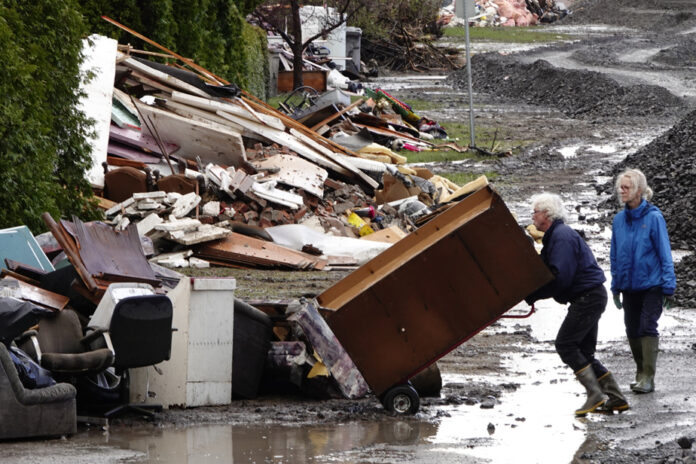(Sainte-Marthe-Sur-Le-Lac) Four years after the heavy flooding that damaged hundreds of homes, anger persists in Sainte-Marthe-sur-le-Lac, in the Laurentians.
Many citizens are still suffering from the financial and emotional consequences of the disaster. Earlier this month, a judge authorized a class action suit against the municipality and the province on behalf of the victims.
Sylvie Béchard had only owned her small house for six months when her neighbor came knocking on her door on the night of April 27, 2019 to warn her that the dike retaining the waters of Lac des Deux-Montagnes had just given way.
“She told me I had to go, the levee broke and we would be flooded,” she said.
Ms. Béchard was not able to return to her home until 11 days later. The scene was “hellish,” she recalls.
While the ground floor had been relatively spared, its basement was filled with standing water. The living room, the two bedrooms were destroyed. Personal effects, such as clothes and all his photographs were only good to throw away. “Everything I had picked up in my life was there. »
Richard Lauzon, another disaster victim from Sainte-Marthe-sur-le-Lac, says his plans were shattered by the 2019 floods. He then owned two houses: one where he lived, the other was planned for his old parents.
The damage forced him to demolish one of the houses. He sold the other, tired of what he sees as the lack of sensitivity of provincial and municipal governments on the issue of compensation for repairs.
“I worked all my life to be able to be a landlord, but ultimately, I end up with nothing,” laments Mr. Lauzon, who became a tenant in another city.
Mr. Lauzon is the lead plaintiff in the class action. The lawsuit argues that authorities knew the levee could fail and did not act to prevent it. The allegation has yet to be proven in court.
He cites a report written in 2017 by a private firm, Axio Environnement, which had deemed that major repairs were necessary to the dike in order to counter the effects of erosion and prevent a rupture. “[The dyke] has been neglected. She had to give in one day to the next, ”says Mr. Lauzon.
Authorities defended themselves by saying at the time that the mayor had requested an environmental assessment. Work was to begin when the dike broke. Prime Minister François Legault explained at the time that no one expected this.
Several residents had obtained compensation from the provincial government for damage to their property, but Lauzon says it was insufficient to cover all costs. He says he received $131,000 for his three-bedroom house, an amount he considers “ridiculous”.
Today, the city still bears the scars of the disaster. Vacant lots rub shoulders with old houses still standing and recently built residences.
The dam has been rebuilt. It is higher than the previous one. On one sloping side, you see large rocks, on the other, grass. During a recent visit, brown water reached halfway up the structure, higher than nearby homes.
On one of these vacant lots stood the house of Josée Arès who lived there with her young family.
She says her house didn’t seem to be too damaged at first glance. But the following year, cracks appeared on the foundation due to water damage and ground instability.
In the three years following the flood, she had to discuss with the municipality the fate of the house. She came to the conclusion that it should be demolished. Ms Arès reports that her sanity suffered as she had to negotiate with contractors, engineers and authorities while working and caring for her young son and his partner.
She was greatly relieved when she was finally able to obtain the demolition permit last summer.
“I thought I would be emotional because it was my first home, because it was where my son was born. It held so many memories, but the feeling of being released from it all was stronger. »


















